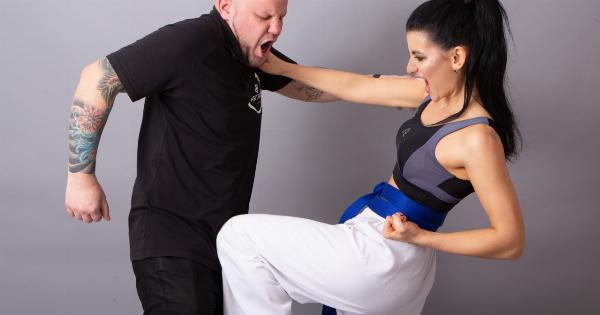Cranial hyperhidrosis, also known as excessive sweating of the head and face, is a condition that can have a significant impact on an individual’s quality of life.
While sweating is a normal bodily function that helps regulate body temperature, excessive sweating can be embarrassing and make daily activities uncomfortable. In this article, we will explore the causes, symptoms, and treatment options for cranial hyperhidrosis.
Causes of Cranial Hyperhidrosis
Cranial hyperhidrosis can be classified as primary or secondary. Primary cranial hyperhidrosis is thought to be caused by overactive sweat glands due to a dysfunctional sympathetic nervous system.
It often runs in families and typically starts in childhood or adolescence. On the other hand, secondary cranial hyperhidrosis is caused by an underlying medical condition or medication.
Conditions such as thyroid disorders, menopause, anxiety disorders, and certain medications like antidepressants can contribute to secondary cranial hyperhidrosis.
Symptoms of Cranial Hyperhidrosis
Excessive sweating of the head and face is the primary symptom of cranial hyperhidrosis. Individuals with this condition may find that their scalp, forehead, and face constantly appear wet or moist.
Sweat may drip down from the scalp or forehead, causing discomfort and embarrassment. In severe cases, cranial hyperhidrosis can lead to social anxiety, low self-esteem, and difficulty participating in social activities.
Diagnosing Cranial Hyperhidrosis
If you suspect that you may have cranial hyperhidrosis, it is important to consult with a healthcare professional. They will evaluate your symptoms, medical history, and conduct a physical examination.
In some cases, additional tests may be performed to rule out underlying medical conditions that may be contributing to excessive sweating.
Treatment Options for Cranial Hyperhidrosis
While there is no known cure for cranial hyperhidrosis, several treatment options can help manage the condition and improve quality of life. These include:.
1. Topical Antiperspirants
Over-the-counter or prescription-strength antiperspirants containing aluminum chloride can be applied to the scalp, forehead, and face to reduce sweating. These antiperspirants work by temporarily blocking the sweat glands, reducing sweat production.
2. Oral Medications
Medications such as anticholinergics can help reduce excessive sweating. These medications work by blocking the chemical signals that stimulate the sweat glands, thereby decreasing sweat production.
However, they may have side effects such as dry mouth, constipation, and blurred vision, which should be discussed with a healthcare professional.
3. Botox Injections
Botox injections are another treatment option for cranial hyperhidrosis. Botox works by temporarily blocking the nerves that stimulate the sweat glands, reducing sweat production.
The effects of Botox injections typically last for several months and can be repeated as needed.
4. Iontophoresis
Iontophoresis involves passing a mild electrical current through water or a wet pad to the affected areas. This treatment option is usually effective for excessive sweating of the hands and feet but can also be used for cranial hyperhidrosis.
The electrical current helps to temporarily block the sweat glands, reducing sweat production.
5. Surgical Options
In severe cases of cranial hyperhidrosis that do not respond to other treatment options, surgery may be considered.
Surgical procedures such as endoscopic thoracic sympathectomy (ETS) or sweat gland removal can be performed to permanently deactivate or remove the sweat glands. However, these procedures carry certain risks and should only be considered after careful evaluation and discussion with a healthcare professional.
Managing Cranial Hyperhidrosis
In addition to medical treatments, there are several lifestyle changes that can help manage cranial hyperhidrosis. These include avoiding triggers such as spicy foods, hot beverages, and stressful situations that may exacerbate sweating.
Keeping the head and face cool by using fans or avoiding direct sunlight can also provide relief. Wearing breathable fabrics and using absorbent accessories like headbands can help absorb excess sweat and prevent it from dripping down the face.
Seeking Support
Living with cranial hyperhidrosis can be challenging, both physically and emotionally. It is essential to seek support from friends, family, or support groups to cope with the condition.
Mental health professionals can also provide guidance and strategies to manage the impact of excessive sweating on mental well-being.
Conclusion
Cranial hyperhidrosis, or excessive sweating of the head and face, can be a distressing condition. While it may not be curable, various treatment options can help manage the symptoms and improve quality of life.
It is essential to seek medical advice to determine the underlying cause and explore appropriate treatment options. Meanwhile, incorporating lifestyle changes and seeking support can contribute to coping effectively with cranial hyperhidrosis.






























